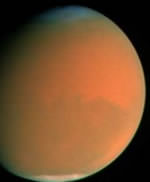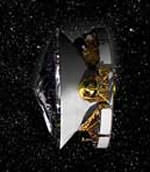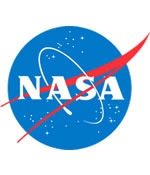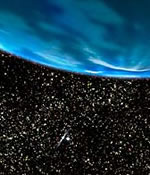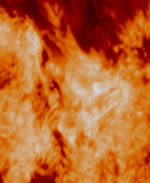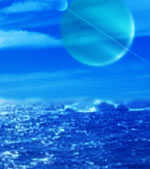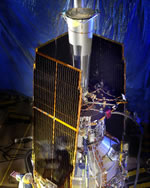
Image credit: NASA
NASA’s Gravity Probe B arrived at Vandenberg Air Force Base on Friday, July 11 to begin launch preparations. Once launched, the spacecraft will use four ultra-precise gyroscopes to test two predictions of Einstein’s General Theory of Relativity: how space and time are warped by the Earth, and how the Earth’s rotation drags space-time around with it. If all goes well, the spacecraft will launch on board a Boeing Delta II rocket in late 2003.
The NASA spacecraft designed to test two predictions of Einstein’s Theory of General Relativity has been shipped from the Lockheed Martin Space Systems Facility in Sunnyvale, Calif., to the launch site at Vandenberg Air Force Base, Calif., after completing environmental testing. The Marshall Center manages the Gravity Probe B program for NASA.
The NASA spacecraft designed to test two important predictions of Albert Einstein’s Theory of General Relativity was shipped yesterday from the Lockheed Martin Space Systems Facility in Sunnyvale, Calif., to the launch site at Vandenberg Air Force Base, Calif., after completing environmental testing.
NASA’s Gravity Probe B mission, also known as GP-B, will use four ultra-precise gyroscopes to test Einstein’s theory that space and time are distorted by the presence of massive objects. To accomplish this, the mission will measure two factors — how space and time are warped by the presence of the Earth, and how the Earth’s rotation drags space-time around with it.
Stanford University in Stanford, Calif., and Lockheed Martin performed the testing. Shipped by road transport, the vehicle arrived July 10 at Vandenberg for pre-launch operations in anticipation of a launch in late 2003.
NASA’s Marshall Space Flight Center in Huntsville, Ala., manages the GP-B program. NASA’s prime contractor for the mission, Stanford University, conceived the experiment and is responsible for the design and integration of the science instrument, as well as for mission operations and data analysis. Lockheed Martin, a major subcontractor, designed, integrated and tested the spacecraft and some of its major payload components.
The erection of the Boeing Delta II launch vehicle on Space Launch Complex 2 (SLC-2) at Vandenberg Air Force Base is currently scheduled to begin on September 15 with erection of the first stage. Attachment of the nine strap-on solid rocket boosters is scheduled to occur in sets of three on September 16 – 18. The second stage is planned for mating atop the first stage on September 19. Gravity Probe B will be transported from the spacecraft hangar to SLC-2 on October 29 and hoisted atop the second stage. The Delta II fairing will be installed around the spacecraft on November 5, part of final pre-launch preparations. The launch is the responsibility of NASA’s John F. Kennedy Space Center in Florida.
Original Source: NASA News Release

